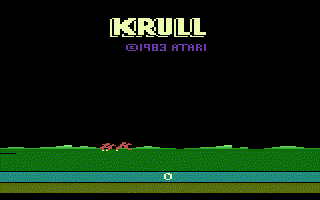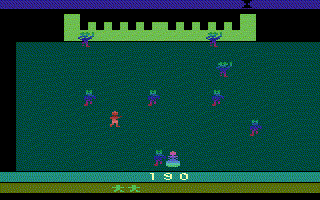Source: Byte – October 1983
Byte was probably the best general computer magazine of its time. It had a long publishing run starting in the 1970s and continuing into the 1990s. This issue is from October 1983 and includes:
Cover Story
- Product Preview: The HP 150 – The HP-150 somewhat unique machine. It ran MS-DOS but was not PC compatible. It was also one of the first computers with a touch screen (though it was optional). It was fairly powerful for its time. It used an 8088 CPU but it ran at 8 MHz instead of the 4.77 MHz of the IBM PC.
- An Interview: The HP 150’s Design-team Leaders – An interview with Jim Sutton and John Lee, the leaders of the design team for the HP 150.
Columns
- Build the Micro D-Cam Solid-State Video Camera, Part 2 – The second part of a series on building a digital camera. This part covers serial interfaces for the Apple II and IBM PC and software for the Apple II.
- BYTE West Coast: Shaping Consumer Software – Trip Hawkins of Electronic Arts talks about how he judges software and the programmer as an artist.
- User’s Column: New Computers, Boards, Languages and Other Tidbits – Items covered include Modula-2/86, Problem Knowledge Coupler (medical software), Kaypro 4, Osborne Executive, and more.
Themes
- The Unix Operating System – An overview of the Unix operating system.
- The Unix Tutorial, Part 3: Unix in the Microcomputer Marketplace – A look at licensed Unix OS versions as well as look-alikes and work-alikes (Linux would fall under this category though that wouldn’t exist for nearly another decade).
- Unix and the Standardization of Small Computer Systems – A look at the history of Unix and how it helped to standardize software and hardware of “small systems” (i.e. workstation and mini-computers).
- A Tour Through the Unix File System – A tutorial on the Unix file system.
- The Unix Shell – A look at both the command interpreter and programming capabilities of the Unix shell.
- Unix as an Application Environment – A look at how Unix compares to other operating systems in terms of development tools and end user applications.
- Usenet: A Bulletin Board for Unix Users – In many ways, Usenet can be thought of as the beginning of the public Internet. This article covers the history and current state of Usenet.
- The Unix Writer’s Workbench Software – A software package designed to help improve your writing. It includes spelling and grammar assistance among other things.
- Typesetting on the Unix System – A look at troff (Typesetter RunOFF) and its offshoots.
- Moving Unix to New Machines – Thoug Unix was extremely portable relative to other operating systems, there were still challenges to porting it to new systems. This looks at some of those challenges.
Reviews
- The NEC Advanced Personal Computer – This machine was designed to run CPM/86 so essentially this is a 16-bit CP/M machine with 128K RAM and two 8-inch floppy drives. I don’t know if it was clear at the time but CP/M would shortly disappear from the market in favor if PC compatibles. The 8-inch disk format wouldn’t really be around much longer either.
- Radio Shack’s TRS-80 Model 4 – My high school was still using TRS-80 Model IIIs and 4s to teach BASIC programming at least through the early 1990s. These machines were Z80 based and had their own DOS. The Model 4 could also run CP/M software. With two 5.25″ floppy disk drives and 128K of RAM a Model 4 cost about $3000.
- The Morrow Micro Decision – The Osbourne 1 and Kaypro II were considered to be the main competition for the Morrow Micro Decision. It is a Z80 based CP/M computer with 64K of RAM and 5.25″ floppy drive that starts at $1200.
- The Microneye – A digital camera with a 256×128 sensor that could interface with various computers via an RS-232 Interface. It worked at least with the Apple II, IBM PC, Commodore 64, and Color Computer.
- The M68000 Educational Computer Board – A single board computer with a 4 MHz 68000 CPU, 32K RAM, and various ports and interfaces for $495. This board fits in a Heathkit H-19 terminal.
- Fancy Font – Software that lets you design your own fonts for Epson printers.
- More Unix-style Software Tools for CP/M – A look at Microtools, a package of several utilities for CP/M that add Unix-like capabilities. Inclued are tools similar to grep, diff, sort, tree, echo, find, merge, and more.
Features
- Photographics Animation of Microcomputer Graphics – A technique for generating stop motion animation using a computer to generate the images and a video camera.
- The Fourth National Computer Graphics Association Conference – A look at the latest graphics hardware and software.
- Echonet, Part 2: The Compiler – Part two of a multipart series on Echonet, a programming language/system. This part covers the compiler.
- Computer Crime: A Growing Threat – This article looks at real-life computer crimes and some of the requirements for a secure system. Most crimes at this point involved unauthorized access. A comparison is drawn between the fictional War Games (great movie) and a real-life incident several months before that movie was released in which several teenagers gaines access to the Los Alamos nuclear weapons laboratory.
- Mainframe Graphics on a Microcomputer – Techniques for saving mainframe graphical output via a terminal program and converting them for display on your home computer…assuming you have high resolution graphics capabilities.
- Talker – A program to make writing talking programs for the TRS-80 and Vortrax’s Type-‘N-Talk easier.
- Bitmaps Speed Data-handling Tasks – Programming techniques for using bitmaps to speed up list comparison and file searches.
- Simplified Program Interfacing – Using jump and data tables to simplify the interface between two programs.
Nucleus
- Editorial: A Challenge to Education – Radio Shack’s “America’s Educational Challenge” initiative.
- MICROBYTES – The latest news including the first 256K DRAM chips, memory and other componenet shortages, Telelearning electronic university, Texas Instruments and Times reduce prices on their computers, Interland announces a $400 per device Ethernet link, and more.
- Letters – Letters from readers about Word Tools for the IBM PC, double-spacing with Wordstar, searching in Wordstar, and more.
- User to User – Questions answered about copy protection and privacy, cache RAM, public key encryption, and more.
- Ask BYTE – Questions answered about joysticks for the PC, Apple disks, sharing a color monitor with multiple systems, developing games for the Atari 2600, and more.
- Software Received – Quick looks at Apple: Bookends (a reference management system), The Chambers of Voab (educational game), The Cheap Assembler (menu-driven editor/assembler), Home Investment Package (stock-trading and compound interest), Tactical Armor Command (World War II sim), Ultimaker II (Ultima II character editor, map printer, and hints); Atari: Paris in Danger (1814 military sim), Solar Storm (adventure game); CP/M: Fallout (a fallout prediction and shelter design program), Organizer II (creates menus), Pro Pascal (programming language), Z80ASM (Z80 assembler); Commodore: Casual Writer (word processor), Deadly Skies (arcade game), Dr. Floyd (AI sim game), Gold Fever (arcade game), The Math Teacher (educational math program), Neutral Zone (arcade game), Scorpion (survival game), Type For Your Life (teaches typing), Wordplay (various word games); IBM PC: C Compiler System, Electric Ledger (checking program), Financial Planning for Supercalc (spreadsheet enhancement), and more.
- Clubs and Newsletters – A listing of some of the latest computer related clubs and newsletters.
- What’s New? – A brief look at new product including unix benchmark programs, Unity (A relational database for Unix), a new Unix workstation with built-in C compiler (Minibox), CT/680 color graphics terminal from General Digital Industries, two new RGB monitors from Panasonic, Web Network for Kaypro computers, Novell Sharenet X allows up to 255 IBM PC XTs to share up to 320 MB of storage, an interface from Prowell Computer Services that allows Apple IIs and Atari 8-bit computers to share files, a 300 bps modem from Avcom for the IBM PC, CP/M Processor for the TI 99/4A, word processor and database manager from Mirage Concepts, and lots more.

…and more!






